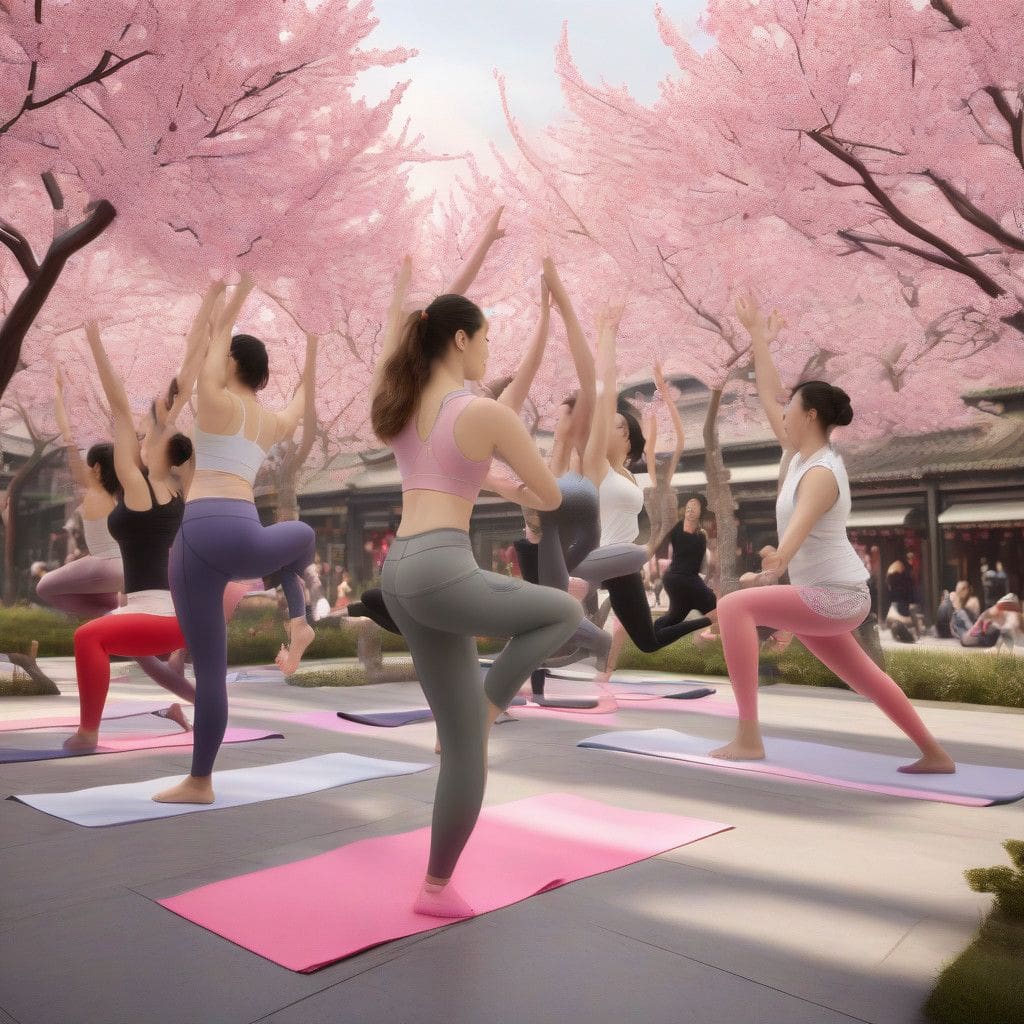Lululemon Athletica Inc. has made significant strides in the competitive landscape of the Chinese retail market, particularly in the athleisure sector, where the Canadian company finds itself thriving despite broader economic challenges. With a managing director, San Yan Ng, who has pioneered a tailored strategy since 2018, Lululemon’s presence has burgeoned from a mere 10 stores to over 130, culminating in the achievement of $1 billion in sales for the first time in China. This remarkable growth positions China as Lululemon’s second-largest market after the United States.
In stark contrast to the broader trends affecting Western brands in China—such as a post-Covid economic slowdown that has seen companies like LVMH and Starbucks reevaluate their strategies—Lululemon seems to be operating in a different realm altogether. The brand has reported astounding sales growth, with a 40 percent increase in the first half of the year and a notable rise in the average price of its products sold in the market; items are priced about 20 percent higher than in the U.S.
The potential impact of this success is evidenced further by predictions from HSBC, which suggest that by 2026, China may account for roughly 20 percent of Lululemon’s total anticipated sales, estimated at nearly $13 billion globally. Such projections indicate that Lululemon could soon be more reliant on Chinese sales than established giants like Apple and Nike.
The success of Lululemon within the Chinese market is equally surprising given the fierce competition it faces. The company has carved out a significant niche, emerging as the third-largest foreign sports apparel brand in China. Competing brands have struggled amidst rising inflation and changing consumer behaviors, yet Lululemon’s focus on high-quality, premium-priced products—like its $150 yoga pants—has resonated with a segment of Chinese consumers who are increasingly shifting away from ostentatious displays of wealth.
A notable factor contributing to Lululemon’s ascendance in this unique marketplace is the evolving definition of luxury among Chinese consumers. According to retail consultant Jessica Gleeson, “Health and wellness are the new luxury categories in China.” This evolving sentiment aligns perfectly with Lululemon’s core offerings, positioning the brand favorably as economic pressures discourage extravagant spending.
Moreover, Lululemon’s strategy of localization has proved effective in appealing to Chinese preferences. The company has adapted its product lines to suit local interests, including the introduction of a Hike collection that capitalizes on increased demand for outdoor activities in a post-Covid China. Up to 35 percent of Lululemon’s sales in China stem from region-specific products. Creative marketing adaptations, such as collections designed for the Lunar New Year, resonate well with the local consumer base.
The brand’s foray into higher price bands also reflects a shift in consumer attitudes. More than 40 percent of Lululemon’s Tmall sales, as of September 2024, comprised items priced above 1,000 yuan ($140), showcasing a significant increase from just 10 percent three years prior. This willingness to pay premium prices highlights a segment of the population that prioritizes quality and brand reputation over affordability.
Despite these gains, Lululemon faces challenges as its presence grows more pronounced. With ambitions to penetrate lower-tier cities in China, the company risks diluting its exclusive brand identity—a transition that could invite further competition from local brands, whose offerings often replicate popular Western designs at significantly lower price points. These “pingti” brands produce high-quality replicas of Lululemon’s items, and as local competition intensifies, maintaining market share may become increasingly difficult.
Moreover, while yoga products still play a central role in Lululemon’s offerings, they represented merely 32 percent of total sales on Tmall by September, a notable decline from previous years. The demand for versatile attire that spans various occasions illustrates a growing market need, prompting Lululemon to expand beyond its core yoga wear and embrace a broader range of athleisure products, thereby catering to a wider audience.
As customer demographics shift, men’s products are emerging as a significant area of growth. Campaigns that focus on well-being for all inclusively challenge perceptions that Lululemon is exclusively a female brand. Engaging male customers is vital for the company if it wishes to capitalize on the changing approach to fitness and leisure.
Shanghai-based customer Mila Li voices a common sentiment among Lululemon fans, stating she is prepared to invest in higher-priced items if they deliver better quality and support for her athletic pursuits.
For Lululemon, the success of its $150 yoga pants amidst economic uncertainty reveals the underlying shifts within the Chinese consumer landscape. The brand’s keen strategy to localize offerings and its positioning within the growing wellness movement underscore how astute market adaptations can yield remarkable growth—even in challenging environments.












